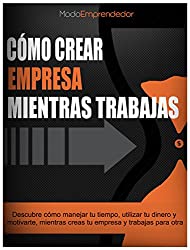
What do companies like Facebook, Instagram, Dropbox and LinkedIn share in common?…Their creators knew how to create profitable businesses.
In addition, apart from the resounding success and being profitable businesses, they have been supported in some part of their gestation and/or development by the company Greylock Partners.
At Greylock, their mission is to support entrepreneurs who want to transform the market through ingenious software, and help them through accompaniment and investment through different stages; with the goal of teaching them how to create profitable businesses worth more than a billion dollars.
For Sarah Tavelan investment partner at Greylock, the secret is in the Engagement. Engagementmeans in Spanish commitment and refers to the relationship that companies create with their consumers.
So, the secret is knowing how to create profitable businesses by increasing engagement. For Sarah, this is achieved by clearing 3 levels.
How to create profitable businesses.
We must overcome the following levels:
- Level 1: Focus on growing the user base that performs an action. (GROWING UP)
- Level 2: The product should get better the more it is used. Users have the most to lose if they stop using it. (TO HOLD BACK)
- Level 3: Engaged users help perpetuate the product. (PERPETUATE)
We all want to know how to create profitable businesses, but we must be aware of the objectives that we must pursue at each level.
How to beat each level.
1. Level 1 (GROW)
Sarah affirms that the important thing is not to have a greater number of users, it is to make the users that you have perform a action determined. Like tweeting on Twitter or pinning on Pinterest.
To the extent that this is true, the user base will grow and you have a better chance of not falling. Cases like Yik Yak or Viddy, where they reached a large number of users but these did not last; demonstrate the importance of action.
2. Level 2 (HOLD)
Once we have users interested in the product, we must make them stay with us. In her experience as an investor and product leader, Sarah says that there are 2 variables that allow you to predict whether or not users will continue using the product:
- Accrued benefits: The more the product is used, the better it becomes. How? The consumer enters information that is later used by the company to improve their experience. (Like Instagram that shows us related things on the wall, according to our tastes)
- Established losses: The user must depend on the product because it becomes part of their identity. In such a way that if you stop using it, you are harmed by everything you lose. A great example is Evernote, its freemium system allows us to know it and the more notes we add, the more value it acquires and it is more difficult to stop using it.
3. Level 3 (PERPETUATE)
Once we have users hooked on a product that is getting better and better, we have to see if they are created loops either loops get them hooked even more.
For example on Pinterest: The user pins—>Access more content—>Your discovery experience improves—>The user pins again.
“Creating loops is really complicated, which is why many products don’t have them (although many try),” says Sarah.
So much so that apps like Tinder can’t get the user even more hooked because they’ve created a dead end. What happens when the user receives a matches and have a successful date? It is very likely that it will take time to use the application again.
It is important to measure followers to see if they are engaging or not. Sarah recommends measuring weekly the number of users completing the action and the percentage of active users they are completing the action.
With this information in hand, it is easier to demonstrate to an investor what level the product is at and thus obtain investment.
We hope this information will be of great help to you 🙂
And remember, if you are really interested in creating your own business, you can read our book “How to create a company while working: Discover how to manage your time, manage your money and motivate yourself while creating a company and working for another” , where you will find all the information you need to found your own company, without having to leave your job.


